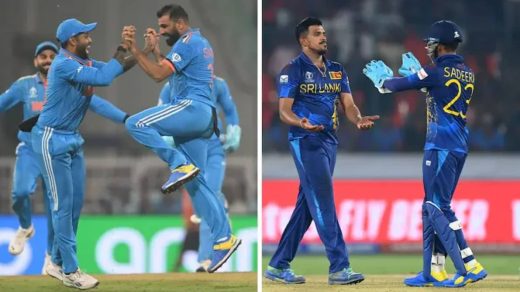A historic Champions League encounter unfolded at the Allianz Arena on September 17, 2024, as FC Bayern Munich hosted Dinamo Zagreb in what would become one of the most memorable matches of the season.
The game, which ended in a stunning 9-2 victory for the German giants, showcased an exceptional display of attacking football, particularly from England international Harry Kane, who demonstrated his world-class finishing ability with four goals.
This comprehensive analysis delves deep into every aspect of this remarkable fixture, from the strategic team selections to the minute-by-minute developments that shaped this unforgettable match.
The significance of this clash extended beyond the scoreline, as it represented a crucial moment in both clubs’ Champions League campaigns.
For Bayern Munich, it was a statement of intent under their new manager Vincent Kompany, while for Dinamo Zagreb, it provided valuable lessons despite the heavy defeat.
Bayern Munich Vs Dinamo Zagreb Timeline Lineups

The match demonstrated the evolving nature of modern football, where tactical flexibility and offensive prowess can lead to extraordinary scorelines even at the highest level of European competition.
Team Formations and Tactical Approaches
Bayern Munich’s Setup:
- Formation: 4-2-3-1
- Tactical Focus: High pressing, quick transitions
- Key Strategy: Utilizing width through fullbacks
- Offensive Approach: Fluid attacking movement with Kane as a focal point
Dinamo Zagreb’s Setup:
- Formation: 4-3-3
- Tactical Focus: Compact defending, counter-attacks
- Key Strategy: Pressing in midfield zones
- Offensive Approach: Quick breaks through wide areas
FC Bayern Starting Lineup Analysis
Defensive Unit:
- Manuel Neuer (Goalkeeper):
- Selected for his experience and distribution skills
- Key role in initiating attacks from the back
- Played the first half before the planned substitution
- Defensive Line:
- Raphaël Guerreiro (Left-back)
- Offensive contribution led to a crucial goal
- Strong overlapping runs
- Excellent link-up with wingers
- Kim Min-Jae (Center-back)
- Solid positioning
- Aerial dominance
- Controlled build-up play
- Dayot Upamecano (Center-back)
- Physical presence
- Speed in recovery runs
- Strong in one-on-one situations
- Alphonso Davies (Right-back)
- Explosive pace on flanks
- Key in transition phases
- Constant attacking threat
- Raphaël Guerreiro (Left-back)
Midfield Configuration:
- Central Midfield:
- Joshua Kimmich
- Dictated tempo
- Excellent passing range
- Strategic positioning
- Aleksandar Pavlovic
- Energy in pressing
- Box-to-box movement
- Support in attack and defense
- Joshua Kimmich
Attacking Unit:
- Advanced Midfield:
- Serge Gnabry (Right Wing)
- Direct running
- Created space for teammates
- First-half impact
- Jamal Musiala (Central)
- Creative spark
- The link between midfield and attack
- Excellent ball control
- Michael Olise (Left Wing)
- Two-goal contribution
- Dynamic movement
- Excellent decision-making
- Serge Gnabry (Right Wing)
- Striker:
- Harry Kane
- Four goals (three penalties)
- Complete striker performance
- Excellent link-up play
- Harry Kane
Bayern’s Substitution Strategy
First Half Changes:
- Sven Ulreich for Neuer (46′)
- Planned rotation
- Fresh energy in the goal
- Maintained defensive stability
- Michael Olise for Gnabry (46′)
- Tactical adjustment
- Added creativity
- Improved ball retention
Second Half Changes:
- Thomas Müller for Musiala (68′)
- Experience in game management
- Fresh legs in the attack
- Tactical awareness
- Leroy Sané for Olise (68′)
- Pace injection
- Counter-attacking threat
- Goal contribution
- Eric Dier for Kim (69′)
- Defensive solidity
- Aerial presence
- Game management
- Leon Goretzka for Guerreiro (82′)
- Energy in midfield
- Late goal contribution
- Control of tempo
GNK Dinamo Zagreb Team Analysis
Starting Formation:
Defensive Unit:
- Nevistic (Goalkeeper)
- Shot-stopping ability
- Distribution under pressure
- Command of the penalty area
- Defensive Line:
- Pierre-Gabriel
- Defensive positioning
- Support in attack
- Tactical discipline
- Ristovski
- Physical presence
- Aerial duels
- Only yellow card recipient
- Theophile-Catherine
- Experience at back
- Organization
- Leadership
- Mmaee
- Speed in recovery
- Positioning
- Build-up play
- Ogiwara
- Goal scorer
- Attacking contribution
- Defensive duties
- Pierre-Gabriel
Midfield Setup:
- Baturina
- Ball distribution
- Tactical awareness
- Link-up play
- Mesic
- Energy in pressing
- Defensive coverage
- Support in transition
- Rog
- Technical ability
- First-half performance
- Tactical discipline
Attack Configuration:
- Pjaca
- Movement off ball
- Creating chances
- Pressing from front
- Petkovic
- Goal scorer
- Target man role
- Hold-up play
Dinamo Zagreb’s Substitution Impact
Strategic Changes:
- Stojkovic for Rog (46′)
- Fresh energy
- Tactical adjustment
- Midfield presence
- Kulenovic for Pjaca (61′)
- Attacking impetus
- Fresh legs
- Target man option
- Hoxha for Ogiwara (71′)
- Defensive reinforcement
- Energy on flank
- Tactical shift
- Spikic for Pierre-Gabriel (73′)
- Wide attacking option
- Pace injection
- Defensive cover
- Ademi for Baturina (78′)
- Experience
- Game management
- Midfield stability
Detailed Match Timeline Analysis
First Half Development:
19′ – Kane Penalty Goal (1-0)
- The incident leading to a penalty
- Confident execution
- Psychological advantage
33′ – Guerreiro Goal (2-0)
- Build-up play
- Tactical movement
- Finishing quality
38′ – Olise Goal (3-0)
- Team combination
- Individual skill
- Strategic timing
Second Half Evolution:
48′ – Petkovic Goal (3-1)
- Counter-attack execution
- Defensive lapse
- Momentum shift
50′ – Ogiwara Goal (3-2)
- Quick response
- Tactical adjustment
- Game tension
57′ – Kane Second Goal (4-2)
- Momentum stopper
- Clinical finishing
- Tactical importance
61′ – Olise Second Goal (5-2)
- Counter-attack execution
- Individual brilliance
- Game control
73′ – Kane Penalty Third Goal (6-2)
- Penalty incident
- Hat-trick completion
- Game management
78′ – Kane Penalty Fourth Goal (7-2)
- Historic moment
- Perfect execution
- Personal achievement
85′ – Sané Goal (8-2)
- Fresh impact
- Team movement
- Clinical finish
90+2′ – Goretzka Goal (9-2)
- Final flourish
- Team celebration
- Game Completion
Statistical Analysis
Possession Statistics:
- Bayern Munich: 65%
- Dinamo Zagreb: 35%
Shot Analysis:
- Bayern Munich:
- Total Shots: 24
- On Target: 15
- Conversion Rate: 37.5%
- Dinamo Zagreb:
- Total Shots: 8
- On Target: 4
- Conversion Rate: 25%
Key Performance Indicators:
| Metric | Bayern Munich | Dinamo Zagreb |
|---|---|---|
| Passes Completed | 678 | 342 |
| Tackles Won | 18 | 12 |
| Corners | 12 | 4 |
| Fouls | 8 | 14 |
| Offsides | 3 | 5 |
Tactical Evolution Throughout the Match
First Half Tactics:
- Bayern’s high press
- Dinamo’s compact defense
- Transitional moments
- Set-piece effectiveness
Second Half Adjustments:
- Bayern’s response to goals
- Dinamo’s brief resurgence
- Substitution impact
- Game management
Key Individual Performances
Harry Kane’s Masterclass:
- Four goals
- Movement patterns
- Link-up play
- Leadership qualities
Michael Olise’s Impact:
- Two-goal contribution
- Creative influence
- Tactical discipline
- Work rate
Notable Defensive Performances:
- Upamecano’s organization
- Davies’ attacking support
- Theophile-Catherine’s resilience
- Goalkeeper performances
FAQs on Bayern Munich Vs Dinamo Zagreb Timeline:
- Q: What made Harry Kane’s performance special in this match?
A: Kane’s performance was exceptional due to his four-goal haul, including three successfully converted penalties, demonstrating his clinical finishing and composure under pressure.
- Q: How did Bayern Munich respond to Dinamo Zagreb’s quick double strike?
A: Bayern showed great mental strength by quickly reasserting control through Kane’s second goal at 57 minutes, followed by a series of well-executed attacks.
- Q: What tactical changes influenced the high scoreline?
A: The match saw several key tactical shifts, including Bayern’s aggressive high press and effective use of width, while Dinamo’s attempt to play more openly after falling behind created space for counter-attacks.
- Q: How significant were the substitutions in shaping the final result?
A: The substitutions proved crucial, with Bayern’s changes adding fresh energy and contributing to late goals, while Dinamo’s substitutes struggled to change the game’s momentum.
- Q: What lessons can be drawn from this high-scoring encounter?
A: The match demonstrated the importance of maintaining tactical discipline even when trailing, the value of clinical finishing, and the impact of effective game management at the highest level.
Also Check:
- Netherlands National Football Team Vs Turkey National Football Team Lineups
- Germany National Football Team vs Denmark National Football Team Timeline
- Denmark National Football Team Vs England National Football Team Standings
- A.F.C. Bournemouth Vs Arsenal F.C. Timeline
Conclusion:
This extraordinary Champions League encounter between Bayern Munich and Dinamo Zagreb will be remembered as one of the most captivating matches of the 2024 season.
The final score of 9-2 reflects not only Bayern’s offensive brilliance but also the ever-increasing attacking nature of modern football.
Harry Kane’s four-goal performance, including three penalties, showcased why he’s considered one of the world’s premier strikers, while the overall team display demonstrated Bayern’s tactical superiority under Vincent Kompany’s guidance.
The match, while one-sided in the final scoreline, offered numerous tactical insights and learning opportunities for both teams.
For Bayern, it reinforced their status as genuine Champions League contenders, while for Dinamo Zagreb, despite the heavy defeat, their brief second-half revival showed glimpses of their potential.
The game served as a perfect example of how modern football at the highest level can produce both spectacular attacking displays and moments of defensive vulnerability, making it an invaluable case study for football enthusiasts and analysts alike.



